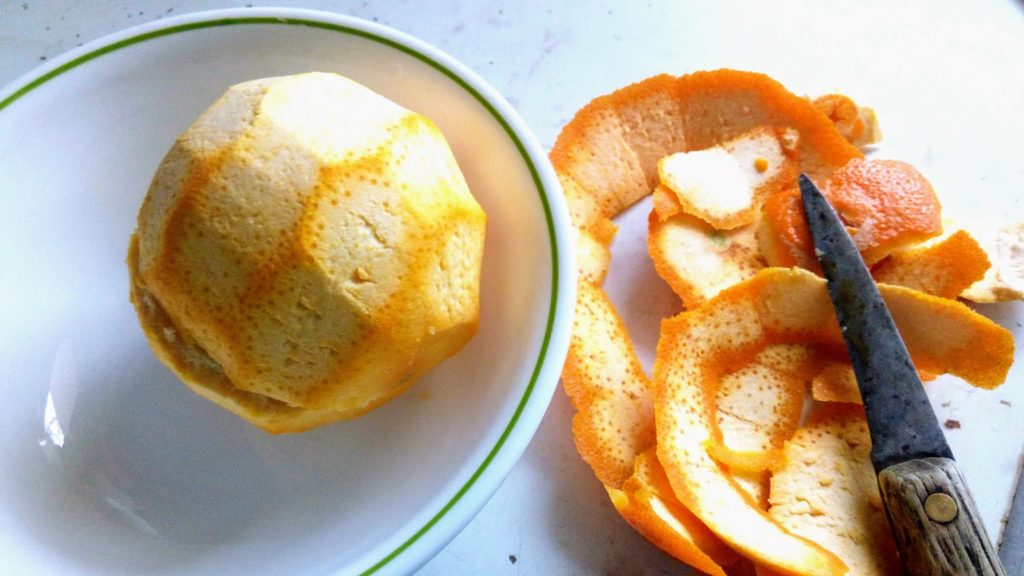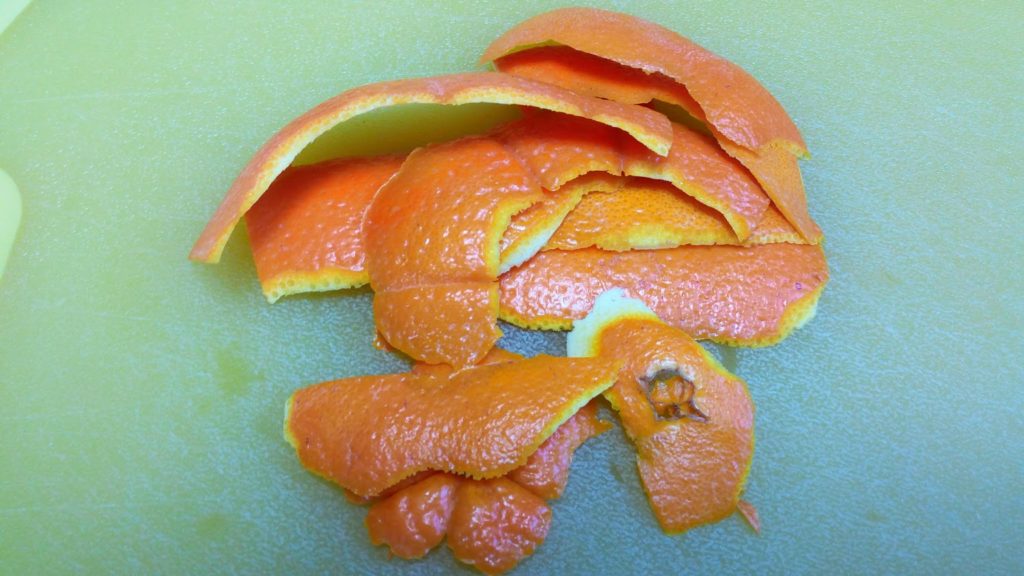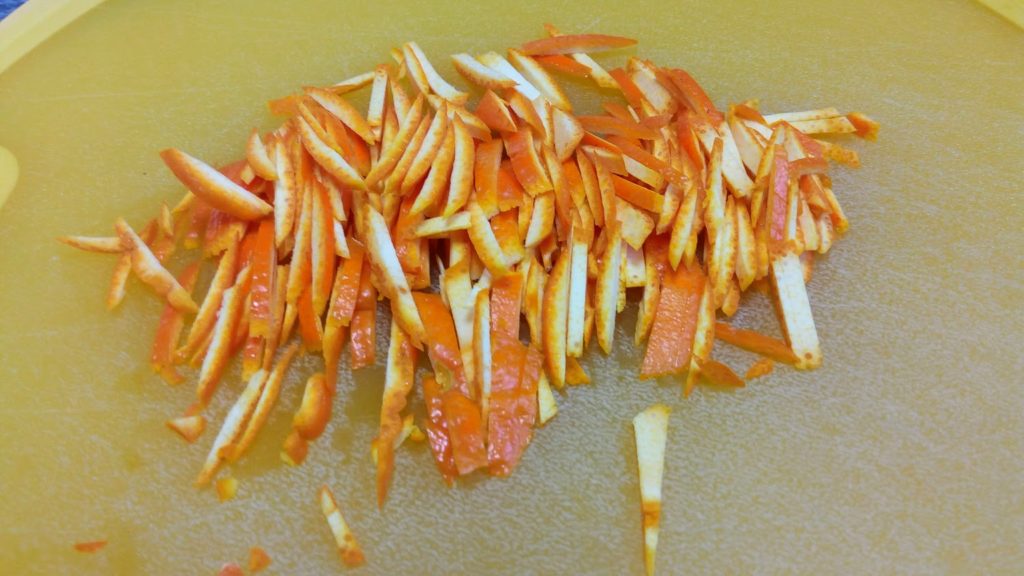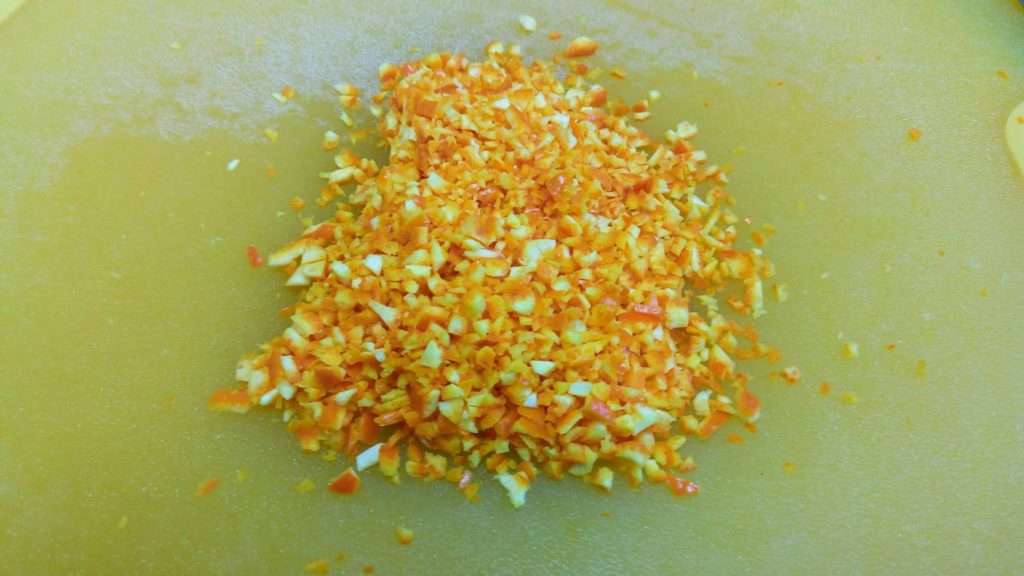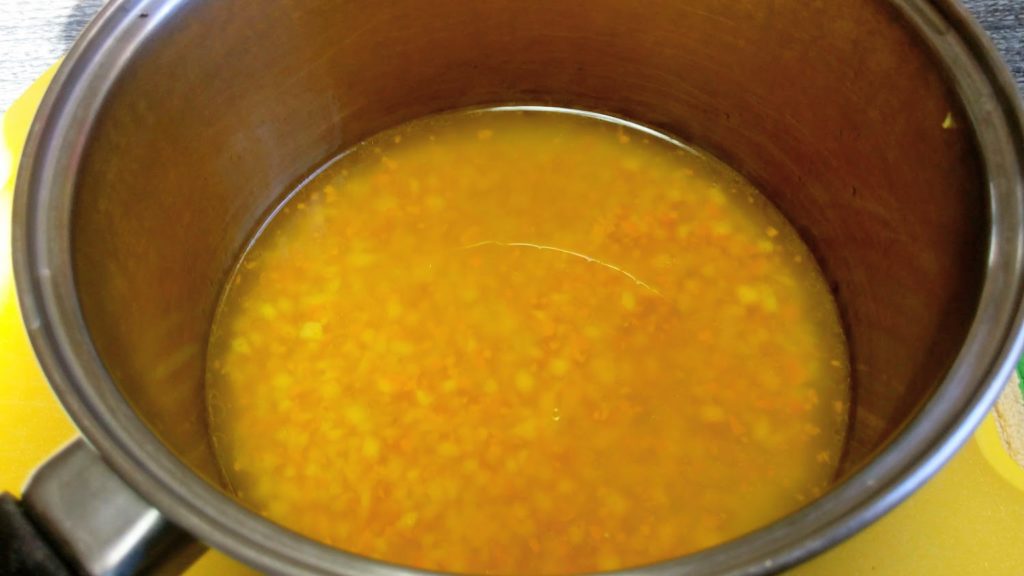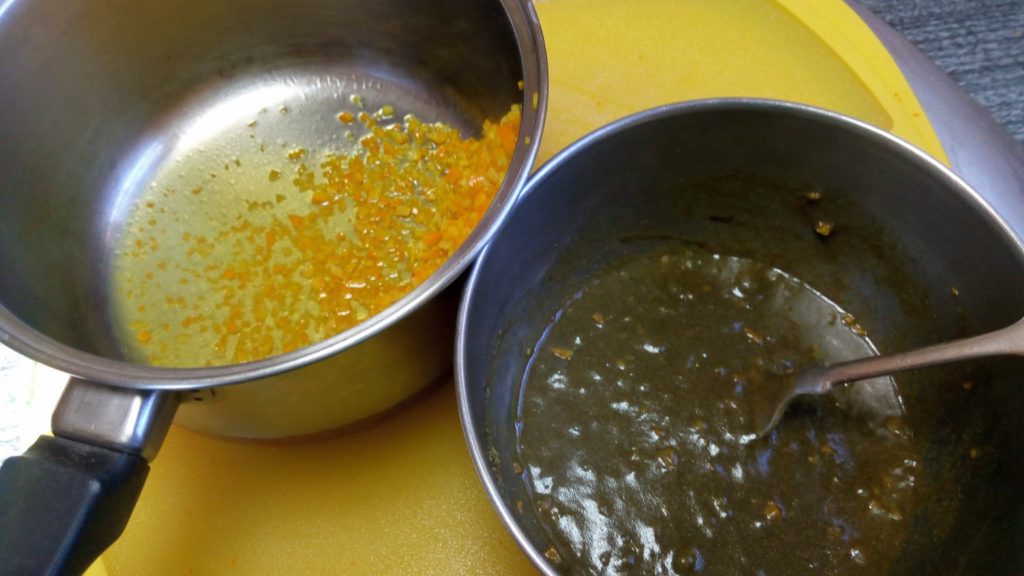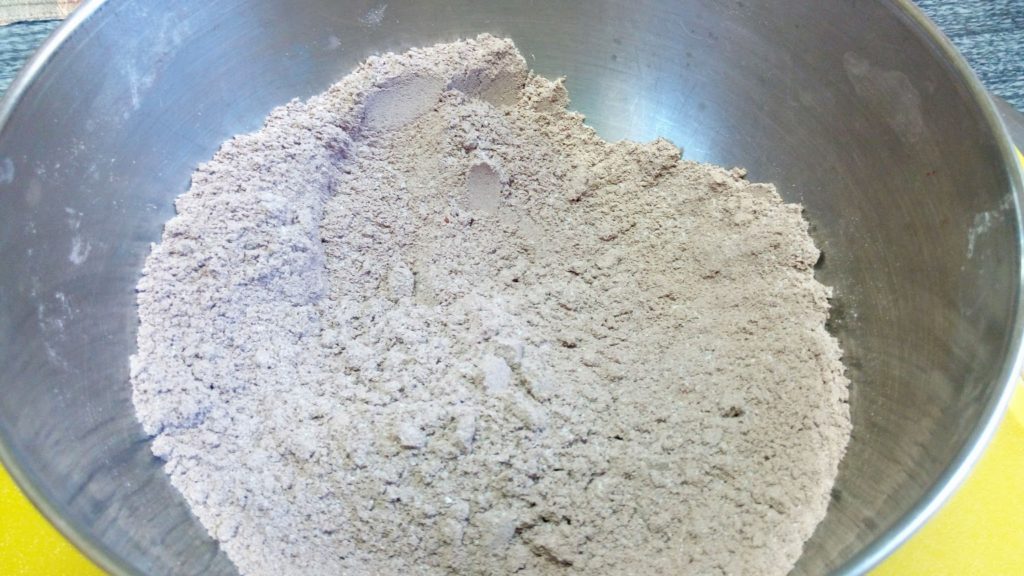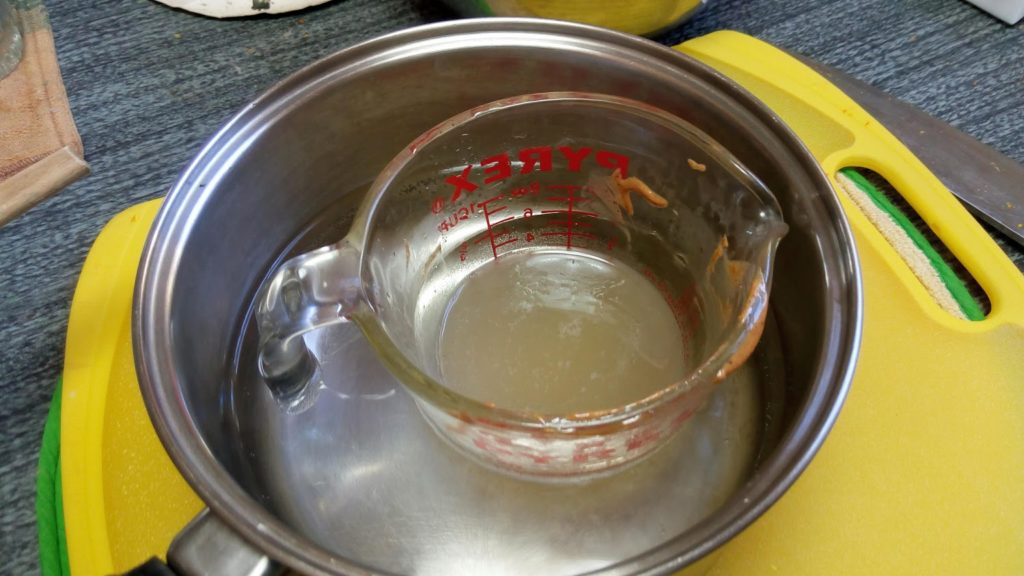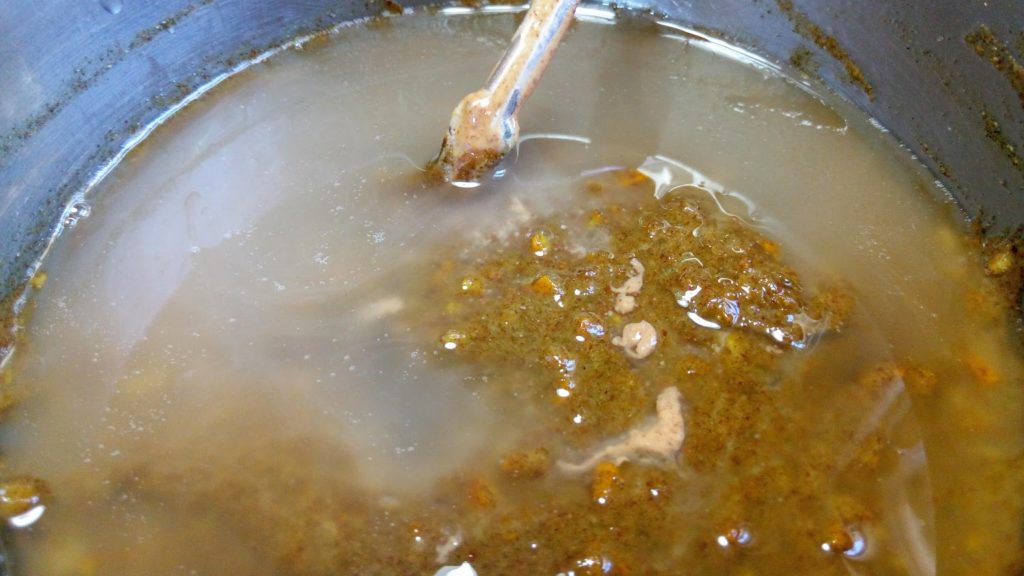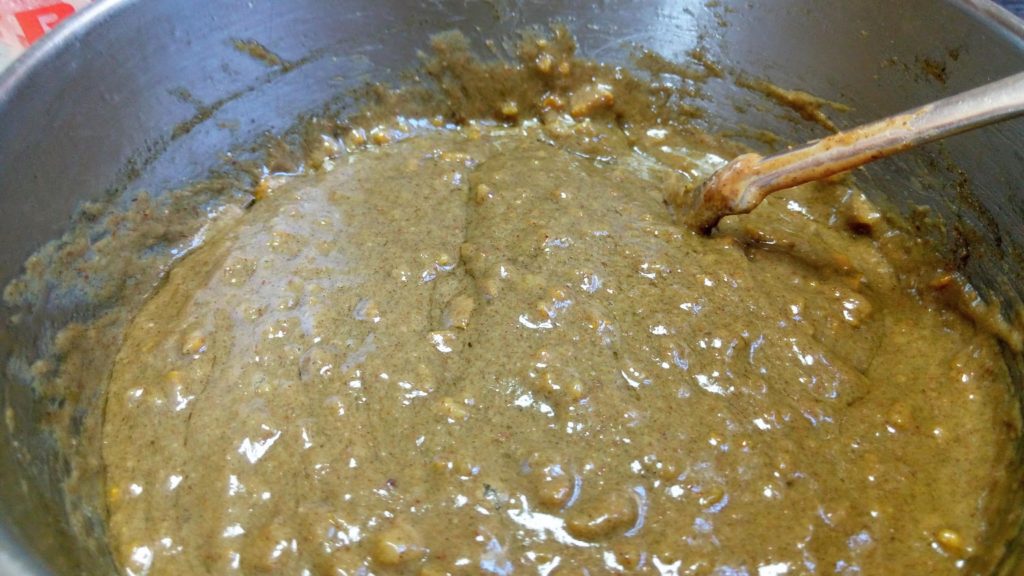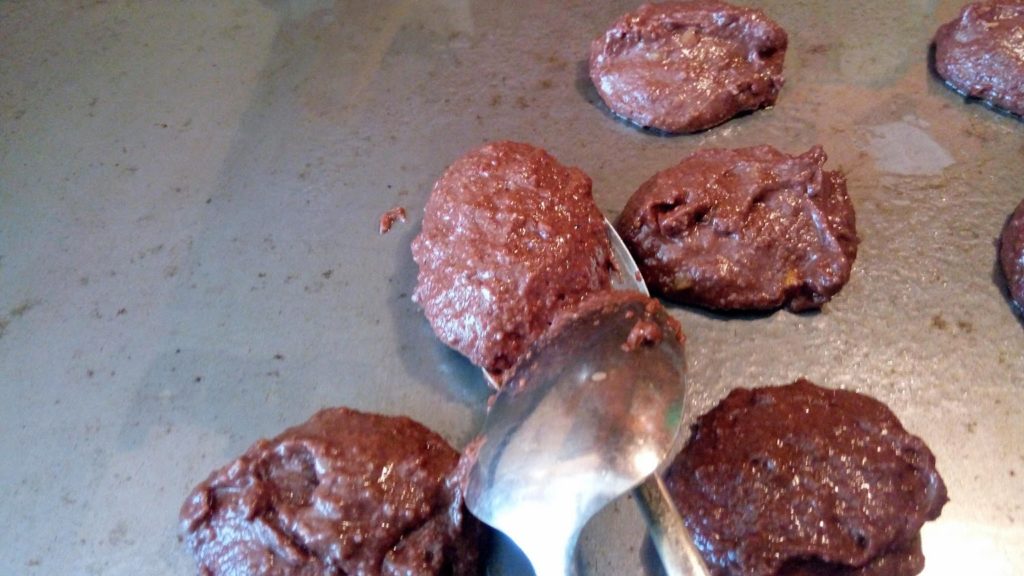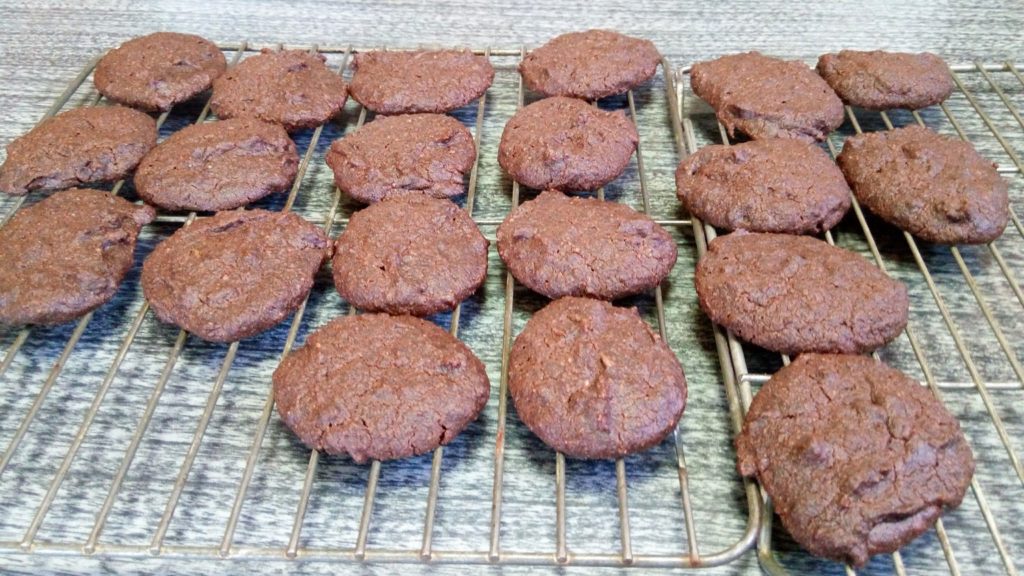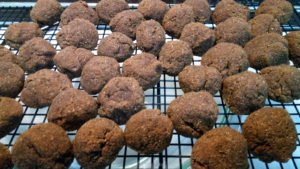Nutrients:
There are two main groups of nutrients: the Macronutrients and the Micronutrients, both of which include many subgroups. Water doesn’t officially get listed in either group but it is the most essential nutrient as we are mostly water, roughly 70%, with some of the other nutrients holding us together in the form of membranes, muscles, skin and bones. Water helps the blood carry nutrients to the cells and remove waste products to be excreted by the kidneys in the form of urine. Water helps us stay cool in the form of sweat on a hot day. Water is the best thirst quencher and is what our brain expects as a beverage. In nature there is no juice tree, only whole fruit with fiber slowing down digestion of the sweet fruit juice carbohydrates. We need about eight cups of water per day, more on a hot sweaty day and more if diuretic beverages such as coffee or alcohol are consumed. Without water we wouldn’t be able to digest our macro and micro nutrients.
So drink and be merry with a glass of water, nature’s favorite thirst quencher! If you think you don’t like it you may just need to try a glass when you are very thirsty, and relax and remember how good it feels, then maybe next time you’ll reach for a glass of water because it just sounds good.
Macronutrients
Macronutrients are needed in larger amounts within a daily diet because they are used for energy and to build new cells and other body tissue. They include carbohydrates, proteins and fats.
Carbohydrates
Carbohydrates (G.18) are also known as sugars, starches, and fiber. They are all made up of individual molecules of sugars called monosaccharides (See Table 2.4 for images of all the types of monosaccharides: G.13)). Different monosaccharides can be connected to each other as disaccharides which include table sugar called sucrose, or they may be in long chains called polysaccharides which can be straight or branching in widely varied shapes.
Fiber is also made up of monosaccharides but the bond connecting them requires digestive enzymes that humans do not make, so they are considered indigestible but help with fluid balance within the small and large intestines and adequate fiber in the diet can help prevent both constipation or diarrhea. Bacteria ( known as our microbiome) within the digestive system may be able to break down some types of fiber and convert it into more beneficial nutrients for us, called short-chain fatty acids, which are a type of fat. The types of fiber that can be converted into beneficial fats by beneficial bacteria are called prebiotics and include resistant starches, inulin, gums, pectins, and fructo-oligosaccharides.
Food Sources of Carbohydrates and Fiber: Fruits, vegetables, beans and whole grains are all sources of fiber and carbohydrates. Sources that contain a greater amount of the prebiotic fiber include garlic, onions, leeks, asparagus, Jerusalem artichokes, dandelion greens, bananas, and seaweed. Raw forms of the vegetables contain more than cooked forms except resistant starches may be increased after the food, such as rice or tapioca starch, is cooked and then chilled. (G.19) Nuts and seeds also contain some carbohydrates and fiber but are more concentrated sources of fats and protein. (G.20)
Food Sources of Monosaccharides found in Human Physiology (See Table 2.4: G.13):
- Glucose: Honey from bees. It is one of the monosaccharides of table sugar, the sucrose disaccharide, along with a molecule of fructose. Table sugar may be made from beet sugar or sugar cane. Glucose is also one of the monosaccharides of lactose – milk sugar, and it is part of larger starches found in grains, seeds, and starchy legumes and vegetables such as beans, peas, corn, potatoes, sweet potatoes, and squash and some is found in fruits in addition to fructose. Glucose is also found in “Cocoa, Aloe Vera, Licorice, Sarsaparilla, Hawthorn, Garlic, Echinacea, Kelp.” (G.40)
- Glucosamine: Animal cartilage released in bone broth – soup stock made with bones; supplements derived from the shells of shellfish such as shrimp, crab or lobster; a few fermented grains. (G.39) Vegetarian sources: “Shitake mushrooms and a red Japanese Algae called Dumontiaceae.” (G.40)
- Galactose: One of the monosaccharides of lactose, milk sugar, that is found in dairy products or human milk. Some people make less of the enzyme needed to digest lactose and may require a digestive enzyme with dairy products to prevent discomfort and promote better digestion. Anyone may become temporarily lactose intolerant after a severe illness with symptoms of diarrhea as the enzyme is formed in surface cells of the intestine which may need a week or two to regrow after a severe intestinal sickness. Hard aged cheeses have a lower lactose content then soft cheeses or milk and butter products. It is also found in some fruits and vegetables, some herbs including “Echinacea, Boswellia, Fenugreek, and chestnuts.” (G.40) Sour cherries. (G.41)
- Galactosamine: Beef or shark cartilage, and “a Red Algae called Dumontiaceae (as a constituent of dextran sulphate)” (G.40)
- Mannose: “Gum Ghatti which is made from the sap of Indian Sumac; Black currants, red currants, cranberries, gooseberries, Aloe Vera Gel from the leaves, Fenugreek, soybeans, green beans, capsicum (Cayenne Pepper), cabbage, eggplant, tomatoes, turnip, Shittake mushrooms and kelp” (G.40) Sweet Cherries (G.41)
- Xylose: Raspberries, cranberries. (G.15) “Guava, pears, berries, blackberries, loganberries, raspberries, Goji Berry; Aloe Vera, Echinacea, Boswellia; Psyllium Seeds; Broccoli, Spinach, Eggplant, Peas, Green Beans, Kelp, Okra, Cabbage, Corn.” (G.40)
- Fucose: “Human breast milk, certain types of mushrooms, seaweed – kelp and wakane, beer yeast.” (G.40) Chanterelle and Penny Bun/porcini mushrooms. (G.42) Maitake, Shiitake, Reishi mushrooms. (G.43) Fucose in human breast milk helps a beneficial type of bacteria called Bacteroides (G.43) become established after the infant is born. It helps protect the infant from more harmful bacteria becoming established in the previously sterile intestinal tract.
- Glucoronic Acid: Usually formed within the liver as it is a very polarized molecule. It is found in heparan sulfate, dermatin sulfate, and chondroitin 4, 6 sulfate. (G.44)
- N-Acetylneuraminic Acid (Sialic Acid): “Human breast milk, dairy foods, whey protein isolate, and eggs.” (G.40). After infancy it is generally up to us to make it for ourselves internally. It is electrically polarized and helps stabilize vessel walls by lining the interior and repelling the opposite sides similar to magnets repelling each other.
- Fructose is more well known then many of the other monosaccharides as it is main sugar in fruits however it is not essential for human health and excess amounts in the diet can lead to fatty liver disease. (G.46) Fructose must be processed and used within the liver similarly to how alcohol is digested.
Proteins
Proteins (G.17) are made up of molecules called amino acids which, unlike the monosaccharides, can only be connected together in straight chains. The protein chain of amino acids may spiral like the DNA molecule of genetic material or bend in some other way rather than being perfectly straight, and it can then be folded into different 3-dimensional shapes and combined with other protein chains to form larger 3-dimensional shapes. The basic structure is straight though like a string of beads or a sentence of letters.
The monosaccharides can connect to each other in multiple places and form more complex shapes like a crossword puzzle of letters or a branching tree made up of letters. This difference is important for the immune system as the complex antigen/antibody recognition seems to be based on the language spelled out by the types of monosaccharides on the antigens found on the surface of cells. Antibodies are made by immune cells to help the immune cell recognize foreign proteins or mislabeled or defective human cells. Antigens and antibodies contain monosaccharides and proteins or lipids. The combined molecules are known as glycoproteins and glycolipids. The combination makes it possible for them to do more complex chemical functions within the body than a simpler protein, carbohydrate or fat molecule. (G.14)
Food Sources of Protein: Dairy products, eggs, meats, poultry, and fish provide all the essential amino acids that humans can not convert from other molecules. Grains, beans, peas and lentils, nuts and seeds, and other vegetables provide protein but most are missing a few of the essential amino acids that we need to consume from our daily diet. (G.17) Fruits and other vegetables also provide some protein but in smaller amounts. Avocado, dried figs, melon and nectarine, artichokes, broccoli, Brussel sprouts, corn, mushrooms, spinach and potatoes are slightly better sources than other fruits and vegetables. (G.23) (G.24)
- The nine essential amino acids are: histidine, isoleucine, leucine, lysine, methionine, phenylalanine, threonine, tryptophan, and valine. (G.21) Beans/ legumes and nuts/seeds and grains provide balance within a meal by providing some of each of the essential amino acids. Grains are good sources of methionine, tryptophan and cysteine while legumes/beans/nuts/seeds are lower in those amino acids except for soy beans and nuts/seeds which are a good source of tryptophan. Grains, nuts, and seeds are low in isoleucine and lysine while legumes/beans are a good source of them. (G.22)
- Conditional amino acids may not be able to be made during illness or stress and would be required from the diet for better function and health: arginine, cysteine, glutamine, tyrosine, glycine, ornithine, proline, and serine. (G.21)
- Non-essential amino acids can be regularly produced in the body and include: alanine, asparagine, aspartic acid, and glutamic acid. (G.21) Excessive amounts of aspartic acid and glutamic acid from dietary sources may have negative health effects due to their ability to increase activity within brain cells and are also known as excitotoxins. Mono-sodium glutamate and other seasoning ingredients are sources of glutamic acid and the artificial sweeteners Nutrasweet/Aspartame/Neotame are sources of aspartic acid.
Fats
Fats are also known as oils, lipids, and as essential fatty acids, or trans fats which may be formed during processing of other fats or found ins some animal products naturally. The artificially produced trans fats may increase heart disease risk and it is recommended to limit their use in the daily diet. Molecules of fats can be found as short chain fatty acids or long chain fatty acids which may be then be joined into small groups called triglycerides. Branched chain amino acids are also possible but the branching is somewhat different than the type formed by monosaccharides.
The chains of fats may include more or less hydrogen molecules. Saturated fats have more hydrogen molecules, monounsaturated fats are missing one hydrogen molecule and polyunsaturated fats are missing several along the chain. The point in the molecule without a hydrogen is more reactive. Saturated fats are more stable than polyunsaturated fats. Monounsaturated fats may be more helpful for reducing risk of heart disease while saturated fats may increase risk. However we do need a variety of the types as each type is involved in different ways throughout the body. Omega 3 fatty acids and omega 6 fatty acids are polyunsaturated fats that have important roles in health and help reduce risk of chronic illness. Phospholipids are a combination of a lipid with the mineral phosphorus. They are important for helping make flexible membranes and play a role in immune health and energy metabolism. Phosphorus is also part of molecules used in energy production (ADP & ATP) and genetic structure, DNA and RNA (nucleotides) when combined with proteins or sugars.
Food Sources of Fats: Avocado, coconut, coconut oil, olives and olive oil, nuts, seeds, and oils, butter, dairy products, egg yolk, meats, poultry, fish.
While all the sources have a mixture of specific types of fats some sources have more of one or two of the types:
- Food Sources of Saturated Fats: Animal products such as butter, cheese, and other high fat dairy products; marbled beef and higher fat processed meats; palm oil and palm kernel oil; coconut and coconut oil. The effect on the body can vary based on the source while too much of any fat is a problem the coconut products have other healthy nutrients while the palm oil and palm kernel oil may promote increased insulin levels and increase appetite. The production of palm and palm kernel oil also may be worse for the environment and cause loss of wild animal habitat. (G.27)
- Food Sources of Mono-unsaturated Fats: Olives and olive oil, canola, sesame, safflower and sunflower oils, peanut oil and peanut butter, almonds, avocados, cashews, peanuts, eggs, red meat, tea seed oil (Camellia seed). (G.33) (G.34)
- Food Sources of Poly-unsaturated Fats: Nuts and seeds and oils made from them; salmon and shellfish (G.28).
- Food Sources of Trans Fats: Margarine and other products made with hydrogenated oils such as coffee creamer,(G.35), commercial baked goods such as frosted desserts or cookies, biscuits, doughnuts, crackers, microwaveable breakfast foods, microwave popcorn, frozen pizza, fried fast foods, cream filled candies. (G.36)
- Food Sources of essential Omega-3 Fatty Acids, including EPA and DHA: Fatty fish such as sardines, tuna, herring, lake trout, and salmon, omega 3 enhanced eggs, omega 3 fortified dairy products, and seaweed,(G.37), shellfish, (G.28) krill and krill oil, (G.38), and vegetarian sources that contain a precursor include flax seeds, walnuts, canola, soybean and walnut oils, beans and tofu and other soy foods, and leafy greens.(G.37)
- Food Sources of essential Omega-6 Fatty Acids, including Gamma Linolenic Acid (GLA): Borage oil, black currant oil, hemp seed oil; butter made from milk from cows that were grass fed; spirulina/blue-green algae. (G.25)
- Food Sources of Phospholipids and other phospho-nutrients: Hemp seed kernels and oil; Artemisia turanica/wormwood leaf; amaranth seed; asparagus; avocado fruit or the inner kernel, dried and powdered; beans/legumes; cardamom seeds and powder; carrots; celery stalks and leaves; cocoa beans and cocoa powder, baker’s chocolate, dark chocolate and to a lesser amount milk chocolate and chocolate syrup; coconut; cumin seed/powder; fennel seed, flax seed, pine nuts; sesame seeds, pumpkin seed kernels, squash seeds; butternut squash and pumpkin; gingko leaf; grapefruit and orange juice with the pulp; Jerusalem artichoke (this is a root vegetable rather than a green artichoke); lettuce, spinach and mustard leaves and other leafy green vegetables and herbs; nuts/peanuts, cashews, walnuts; oats; okra seeds; onion root, leek leaves, garlic; parsnip root; pomegranate seeds and pomegranate peel extract;rice, white or brown but the bran is the best source; rosemary; sorghum; sweet potato or yam; buckwheat (a seed botanically that is not wheat and is gluten free); wheat. (G.26)
Micronutrients
Micronutrients are needed in smaller amounts within the diet and some can be stored by the body and reused so they may not be needed in the diet everyday as long as they are being eaten occasionally; while others can not be stored and are needed in the diet everyday. Micronutrients include vitamins and minerals. Minerals may be needed in slightly larger amounts or smaller amounts and the ones needed in smaller amounts are also known as trace minerals – because we only need them in trace amounts. Vitamins are grouped into fat-soluble vitamins which can be stored in the body and may not be needed in the diet everyday as long as they are included weekly or monthly depending on the nutrient. Water-soluble vitamins can not be stored and need to be included in the diet everyday for ideal health.
Minerals
Food Sources of some important Minerals:
-
- Calcium: dairy products and fortified substitutes made from almond, soy, rice or hemp. Sesame seeds, almonds and other nuts, seeds and beans. Canned salmon and sardines.
-
- Magnesium: oat bran, beans, nuts, seeds, whole grains, leafy green vegetables, chocolate, and molasses.
-
- Phosphorus: most foods contain this nutrient, particularly dairy and protein rich foods, also cereals, nuts and beans. An excess may be provided if carbonated beverages are used regularly.
-
- Potassium: all fruits and vegetables and juices are the richest sources, but animal products also contain some potassium.
-
- Sodium: processed foods containing salt and added table salt are the main sources but use of “softened” water can also increase a person’s daily intake of sodium.
-
- Chloride: table salt and processed foods also provide the electrolyte, chloride.
-
- Iron: meat, poultry and fish and shellfish (G.28) contain a form called heme iron which is more readily absorbed. Vitamin C eaten along with whole grain or beans, nuts and seeds can help increase absorption of non-heme iron.
-
- Iodine: iodized salt and processed food made with iodized salt. Seaweed and coconut products and any other produce grown near the ocean may contain more iodine than produce grown inland.
-
- Selenium: selenium is also more available near coastal waters. Seafood and meat can be better sources and Brazil nuts provide more than other foods. Two Brazil nuts per day may provide the 200 mcg recommended for daily needs. Excess intake regularly may cause toxicity symptoms. One milligram or more per day may cause vomiting, loss of hair and nails and skin lesions. (Nutrition & Diet Therapy, 8th Ed.)
-
- Zinc: shellfish, (G.28), beef, dairy products, nuts, beans, pumpkin seeds. (G.zinc)
- Copper: shellfish, (G.28); organ meats such as liver and kidney; cocoa and chocolate; beans such as lentils, nuts such as almonds, sunflower seeds, potatoes, asparagus and leafy greens; mushrooms, dried fruits such as apricots and prunes; blackstrap molasses, black pepper, and yeast. (G.29) (G.30) The modern diet may tend towards too much copper and not enough zinc and the two minerals need to be in balance with each other for optimal physical and mental health. Excess copper and deficient zinc is associated with mental illness symptoms.
Vitamins
Food Sources of some important Vitamins:
-
- Thiamin (B1): fortified flour or rice, whole grains, pork, beans, nuts, nutritional yeast, eggs, cantaloupe, green vegetables.
-
- Riboflavin (B2): Fortified cereal, milk, eggs, meat, fish, beans, nuts, and seeds. (G.riboflavin)
-
- Niacin (B3): nutritional yeast, meats, red fishes such as salmon and tuna, grains and fortified cereals, beans and seeds, milk, green leafy vegetables, coffee and tea. (G.Niacin)
-
- Vitamin B6: fortified cereal, barley, buckwheat, avocados, baked potato with the skin, beef, poultry, salmon, bananas, green leafy vegetables, beans, nuts, sunflower seeds. (G.Nutritive Value of Food)
-
- Folate: Fortified cereal and rice, beans, black eyed peas, green peas, grains, asparagus, green vegetables, orange juice. (G.folic-acid)
-
- Vitamin B12: shellfish, (G.28), fish, meat, poultry, eggs, milk, cheese, dairy products, Nutritional or Brewer’s yeast. Vegetarians who don’t eat dairy, eggs, fish or other meat products may need a supplement of B12 or nutritional yeast, a vegan food source of vitamin B12. (G.B12)
-
- Vitamin C: many fruits and vegetables and fortified juices including green peas, cabbage, potatoes and citrus fruits.
- Vitamin D: fortified dairy products or their substitutes made from almond, soy, rice or hemp. Salmon, sardines, mushrooms. And sunshine during summer months, 15-20 minutes several times per week.
- Vitamin E: nuts, seeds, and oils made from nuts and seeds, peanut butter, avocado, asparagus, spinach and other leafy green vegetables, pumpkin, red pepper, mango, swordfish. (G.16)
- Vitamin K and K2, vitamin K1 (phylloquinone) and vitamin K2 (menaquinone): Vitamin K is found in leafy green vegetables such as kale, lettuce and spinach, broccoli, Brussel sprouts, cauliflower and cabbage, and smaller amounts in fish, liver, meat, eggs and grains. (G.31) Vitamin K2 is found in animal products such as meat and dairy foods and in fermented products such as Natto, (G.32), Japanese traditional fermented soybeans, (G.45).
Disclaimer
- Disclaimer: Opinions are my own and the information is provided for educational purposes within the guidelines of fair use. While I am a Registered Dietitian this information is not intended to provide individual health guidance. Please see a health professional for individual health care purposes.
The Academy of Nutrition and Dietetics has a service for locating a nutrition counselor near you at the website eatright.org: (eatright.org/find-an-expert)
See G. Links & References for the References.
G.46: Basaranoglu M, Basaranoglu G, Bugianesi E. Carbohydrate intake and nonalcoholic fatty liver disease: fructose as a weapon of mass destruction. Hepatobiliary Surg Nutr. 2015;4(2):109-16. https://www.ncbi.nlm.nih.gov/pmc/articles/PMC4405421/
41 Jaroslava Švarc‐Gajić, Víctor Cerdà, Sabrina Clavijo, Ruth Suárez, Pavle Mašković, Aleksandra Cvetanović, Cristina Delerue‐Matos, Ana P Carvalho, Vesna Novakov, Bioactive compounds of sweet and sour cherry stems obtained by subcritical water extraction. Journal of Chemical Technology and Biotechnology, Dec. 1, 2017, https://doi.org/10.1002/jctb.5532 https://onlinelibrary.wiley.com/doi/full/10.1002/jctb.5532 (G.41) Search result not available in the abstract/paywall: “ Mannose was detected in sweet cherry stem extracts but not in sour cherry samples, whereas D-galactose was seen only in the latter. Mannose is important in human metabolism, especially in glycosylation of certain proteins and it is believed that this sugar aids in urinary tract infections.[51] Xylose …”
